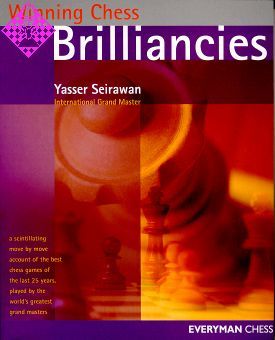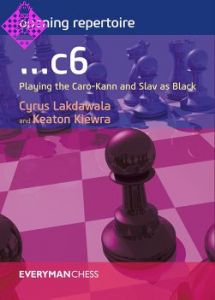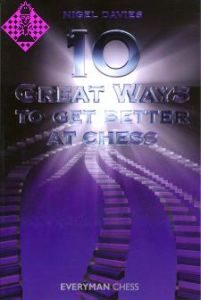Winning Chess Brilliancies
Provides a move-by-move account of the best chess games of the last 30 years, played by the world's foremost chess competitors. It gives a taste of the most dazzling chess combinations, devious strategies, and downright cruel blows as world champions risk it all! This book is truly a celebration of the sport of chess.
The final volume in Yasser Seirawan's Winning Chess series, Winning Chess Brilliancies is an unique collection of the twelve most brilliant and dramatic games of recent years. With detailed comments, insights and explanation for every single move, the reader is able to appreciate the tactics and strategies employed by the world's top players.
This book by International Grand Master Yasser Seirawan provides a move-by-move account of the best chess games of the last 25 years, played by the world's foremost chess competitors. With an authoritative voice that is by turns poetic and analytical, Seirawan serves as host of a fascinating excursion through a dozen of the most brilliant chess games, providing insights into and explanations of each and every move.
Seirawan begins each game with a description of the historical atmosphere of the chess world -and sometimes the world at large- at the time the game was played. When he delves into the game itself, he starts with the reasoning behind the opening moves. From there he provides both a play-by-play description of the game and an analytical commentary, all the while examining the moves in terms of piece development and possible tactical and strategic opportunities. Along the way, a handful of the players are profiled in biographies.
In Winning Chess Brilliancies you'll get a taste of the most dazzling chess combinations, devious strategies, and downright cruel blows as world champions risk it all! This book is truly a celebration of the sport of chess.
From the time that I was bitten by the "chess bug," fantasies of entering a packed hall and playing a brilliancy have stayed with me. I'd dream of making a comeback from a half-point behind the leader, with one round to go.".. .Yaz desperately needs a win against one of the world's most solid grandmasters. Can he pull it off and take clear first?" My fantasy would crank up as I anticipated the oohs and aahs of the audience, amazed by my brilliant, decisive moves.
Yes indeed. Just as basketball players relish taking the final shot with seconds on the clock, chess players hunger for the opportunity to sacrifice pieces and come up with an idea of such wonder that it sets the world back on its heels and makes it take notice. While both chess and basketball place great demands on the emotions and the abilities of the players, there is one obvious difference between the games. Even the most casual sports fan can wonder at a Michael Jordan soaring above his defender, double-clutching to get an open shot, firing, and making a swish. By contrast, if a chess player sacrifices first one piece, then another, then another, and then finally mates with a lowly pawn, only the initiate will understand all the fuss.
Such circumstances give members of the chess world a special bond, almost a kinship. Understanding a game of chess played on the highest level is the reward for hard-won knowledge wrested from hours of study, strife, and plenty of losses! I can recall my own first struggles as I delved into the games of the masters. "Why did the grandmaster do that?" "Why didn't he just move over there?" These questions tortured me every time I played through the games of the leading players of the day. Answering such questions is the aim of this book.
A chess master friend of mine, James McCormick, once told me about the training techniques used for the Japanese game of Go. When beginners first enter the schools to learn Go, they are given 100 of the greatest games of Go ever played and are instructed to memorize the moves so that the patterns of play become etched into their minds. This struck me as a superb way to learn a game. I therefore made a commitment: whenever I replayed an exceptional game of chess, I'd try to memorize that game. While I don't insist that you memorize the games in this book, you will be well rewarded if you do. I believe your play will improve by analyzing them carefully. I've tried to answer questions about these model games before they're asked, and I've dissected the moves to identify the most compelling reasons why they were chosen. My notes will continually recall the principles expounded in the three companion works to this capstone book in the Microsoft Press Winning Chess Series. The chess terminology I introduced in the previous volumes is used freely in this book, and I expect that you are already familiar with it.
In my first book, Play Winning Chess, I discussed chess's four elements:
- Time (deployment of pieces)
- Force (being ahead or behind in pieces and pawns)
- Pawn structure (for determining a plan)
- Space (how much of the opponent's territory a player controls)
These four elements are - or should be - the underpinnings for the principles that guide all our moves.
The second book, Winning Chess Tactics, explained all the traps, ambushes, and swindles that can befall a player. Pins, forks, skewers, double attacks, and discovered checks are but a few of the most common types of tactics described in this volume.
Winning Chess Strategies, the third book, explained the importance of playing with a plan, one that unfolds like magic before the eyes if the player simply applies the four elements of chess to the position and focuses on the pawn structure. A plan, once chosen, must be methodically implemented. Even when a correct plan has been chosen, the player must constantly be on the lookout for the best tactics to reinforce a given position. Nothing can ruin a plan more than an overlooked tactic.
Boy, that's a lot to think about! If a basketball team had to stop and consider collectively their every drive to the basket, full court press, pick and roll, rebound strategy, and defensive coverage, perhaps even each player's role in a given play, they might never score a point! They'd be paralyzed! But basketball players make all these moves appear to come naturally. It looks simple because the players are professionals. Years of toil and hard work, individually and as a team, have made the most difficult plays seem routine. The same is true for today's chess grandmasters. They've analyzed the openings, tactics, various types of plans, technical endings, and attacks. These players appear to flow effortlessly from one advantage to another. They have honed their skills through thousands of hours of concentrated work. They make it look simple - the key to greatness as well as to the brilliancy. Applying the tools of the trade subtly and simply appears natural and yet is satisfying because the results are brilliant.
When two top-flight grandmasters sit down and go for the glory, who's to say who will win? Why is it that a player might be able to pound his equally skilled adversary on one day but not on the next? There are probably dozens of reasons, but the one that I'd like to focus upon is inspiration. A player soars to a level of unusual creativity and plucks out of the imagination a concept so beautiful that it appears to freeze time. It is a brilliant moment.
In this work I will take a look at 12 inspired games, or rather 12 brilliancies, of the past generation by putting them under my "chessic" microscope. It was, of course, enormously difficult to select such a small handful of games. Hundreds, if not thousands, of beautiful games have been played in only the last ten years. How could I choose from so many? It wasn't easy! First of all, nearly all the wins from my career sprang to mind. (How was I supposed to keep my ego at bay? I couldn't!) I humbly put forth only two of my games, so don't skip them!
I will begin each game with a short introduction describing the historical atmosphere of the chess world - and sometimes the world at large - at the time the game was played. When I begin discussing the game itself, I will wax poetic about the reasoning behind the opening moves. As play moves through its middlegame and into the concluding endgame, I will continue to examine the moves in terms of piece development and possible tactical opportunities, but my comments will grow shorter and become more robust as the game reaches its critical moments.
(DIAGRAM)
A few comments are necessary at this point to explain the common conventions I have used throughout these games. The chessboard below illustrates the grid upon which chess notation is based. The coordinate of each square on the board is a combination of a letter (a-h) and a number (1-8). For instance, in the diagram, a White Knight sits on the d4-square.
In standard (algebraic) notation, each chess piece is represented by its initial (although N is used for Knight and no letter is used for pawns). A move is represented by the given piece's initial and the coordinate of the square to which it is moved ("Bh7" is Bishop to h7; "Ne2" is Knight to e2). Other notations are as follows:
- If two pieces of the same kind can go to the same square (as shown, both Black Rooks can go to the d7-square), a coordinate of the correct piece's departure square solves the question: "R7d7" means the Rook on the seventh rank is being moved.
- Adding an "x" to the notation indicates a capture - "g7xf8" signifies that the g7-pawn was moved and captured a piece on the f8-square.
- "0-0" designates castling short (White King and hl-Rook in the diagram above); "0-0-0" connotes castling long (White King and al-Rook).
- A move notation followed by a "+" means check; "++" means double-check.
As part of my commentary, I occasionally punctuate the moves. The following key explains these marks: ! good; !? interesting; !! very good; ? weak; ?! dubious; ?? a blunder. Parentheses around the symbol, like 20...Nc3(!), indicate that my opinion differs from other writers or that of the players themselves. (Give yourself the task of sorting out whose judgment is right!)
Finally, some of my explanations for a given move reveal deeply buried insights. In order that you don't get lost in the thicket of variations, I've employed separate and distinct analysis diagrams. These diagrams have the same border as the diagram above; regular game chessboards will have a solid border.
With that said, now back to my dilemma! Having rejected 20 games for each 1 chosen, my next task was to personalize the games. That is, I wanted to see what the players themselves had to say about them. Nearly all the players, especially the winners, were happy to share their comments. In fact, their seconds, coaches, and a stream of analysts have shared their views with me. Whenever I've incorporated commentary from the players or other authors, I've credited the source. On this point, a special thanks is due to the Chess Informant - a series filled with the best games of the previous four months, with commentaries by the players. I'd also like to thank the writers from my own magazine, Inside Chess, who have shared their elation and sorrows in its pages. Also I offer thanks to the authors of the many books that I scoured in search of information. Without them, this book wouldn't be as fun or interesting.
A final word of thanks goes to the players of these games. To the victor go the spoils, but for a game to be brilliant, the opponent has to put up a heroic defense in order to allow the winner to display creative genius. Both players of each game have my respect.
Yasser Seirawan, Introduction
Winning Chess Brilliancies
Provides a move-by-move account of the best chess games of the last 30 years, played by the world's foremost chess competitors. It gives a taste of the most dazzling chess combinations, devious strategies, and downright cruel blows as world champions risk it all! This book is truly a celebration of the sport of chess.
The final volume in Yasser Seirawan's Winning Chess series, Winning Chess Brilliancies is an unique collection of the twelve most brilliant and dramatic games of recent years. With detailed comments, insights and explanation for every single move, the reader is able to appreciate the tactics and strategies employed by the world's top players.
This book by International Grand Master Yasser Seirawan provides a move-by-move account of the best chess games of the last 25 years, played by the world's foremost chess competitors. With an authoritative voice that is by turns poetic and analytical, Seirawan serves as host of a fascinating excursion through a dozen of the most brilliant chess games, providing insights into and explanations of each and every move.
Seirawan begins each game with a description of the historical atmosphere of the chess world -and sometimes the world at large- at the time the game was played. When he delves into the game itself, he starts with the reasoning behind the opening moves. From there he provides both a play-by-play description of the game and an analytical commentary, all the while examining the moves in terms of piece development and possible tactical and strategic opportunities. Along the way, a handful of the players are profiled in biographies.
In Winning Chess Brilliancies you'll get a taste of the most dazzling chess combinations, devious strategies, and downright cruel blows as world champions risk it all! This book is truly a celebration of the sport of chess.
From the time that I was bitten by the "chess bug," fantasies of entering a packed hall and playing a brilliancy have stayed with me. I'd dream of making a comeback from a half-point behind the leader, with one round to go.".. .Yaz desperately needs a win against one of the world's most solid grandmasters. Can he pull it off and take clear first?" My fantasy would crank up as I anticipated the oohs and aahs of the audience, amazed by my brilliant, decisive moves.
Yes indeed. Just as basketball players relish taking the final shot with seconds on the clock, chess players hunger for the opportunity to sacrifice pieces and come up with an idea of such wonder that it sets the world back on its heels and makes it take notice. While both chess and basketball place great demands on the emotions and the abilities of the players, there is one obvious difference between the games. Even the most casual sports fan can wonder at a Michael Jordan soaring above his defender, double-clutching to get an open shot, firing, and making a swish. By contrast, if a chess player sacrifices first one piece, then another, then another, and then finally mates with a lowly pawn, only the initiate will understand all the fuss.
Such circumstances give members of the chess world a special bond, almost a kinship. Understanding a game of chess played on the highest level is the reward for hard-won knowledge wrested from hours of study, strife, and plenty of losses! I can recall my own first struggles as I delved into the games of the masters. "Why did the grandmaster do that?" "Why didn't he just move over there?" These questions tortured me every time I played through the games of the leading players of the day. Answering such questions is the aim of this book.
A chess master friend of mine, James McCormick, once told me about the training techniques used for the Japanese game of Go. When beginners first enter the schools to learn Go, they are given 100 of the greatest games of Go ever played and are instructed to memorize the moves so that the patterns of play become etched into their minds. This struck me as a superb way to learn a game. I therefore made a commitment: whenever I replayed an exceptional game of chess, I'd try to memorize that game. While I don't insist that you memorize the games in this book, you will be well rewarded if you do. I believe your play will improve by analyzing them carefully. I've tried to answer questions about these model games before they're asked, and I've dissected the moves to identify the most compelling reasons why they were chosen. My notes will continually recall the principles expounded in the three companion works to this capstone book in the Microsoft Press Winning Chess Series. The chess terminology I introduced in the previous volumes is used freely in this book, and I expect that you are already familiar with it.
In my first book, Play Winning Chess, I discussed chess's four elements:
- Time (deployment of pieces)
- Force (being ahead or behind in pieces and pawns)
- Pawn structure (for determining a plan)
- Space (how much of the opponent's territory a player controls)
These four elements are - or should be - the underpinnings for the principles that guide all our moves.
The second book, Winning Chess Tactics, explained all the traps, ambushes, and swindles that can befall a player. Pins, forks, skewers, double attacks, and discovered checks are but a few of the most common types of tactics described in this volume.
Winning Chess Strategies, the third book, explained the importance of playing with a plan, one that unfolds like magic before the eyes if the player simply applies the four elements of chess to the position and focuses on the pawn structure. A plan, once chosen, must be methodically implemented. Even when a correct plan has been chosen, the player must constantly be on the lookout for the best tactics to reinforce a given position. Nothing can ruin a plan more than an overlooked tactic.
Boy, that's a lot to think about! If a basketball team had to stop and consider collectively their every drive to the basket, full court press, pick and roll, rebound strategy, and defensive coverage, perhaps even each player's role in a given play, they might never score a point! They'd be paralyzed! But basketball players make all these moves appear to come naturally. It looks simple because the players are professionals. Years of toil and hard work, individually and as a team, have made the most difficult plays seem routine. The same is true for today's chess grandmasters. They've analyzed the openings, tactics, various types of plans, technical endings, and attacks. These players appear to flow effortlessly from one advantage to another. They have honed their skills through thousands of hours of concentrated work. They make it look simple - the key to greatness as well as to the brilliancy. Applying the tools of the trade subtly and simply appears natural and yet is satisfying because the results are brilliant.
When two top-flight grandmasters sit down and go for the glory, who's to say who will win? Why is it that a player might be able to pound his equally skilled adversary on one day but not on the next? There are probably dozens of reasons, but the one that I'd like to focus upon is inspiration. A player soars to a level of unusual creativity and plucks out of the imagination a concept so beautiful that it appears to freeze time. It is a brilliant moment.
In this work I will take a look at 12 inspired games, or rather 12 brilliancies, of the past generation by putting them under my "chessic" microscope. It was, of course, enormously difficult to select such a small handful of games. Hundreds, if not thousands, of beautiful games have been played in only the last ten years. How could I choose from so many? It wasn't easy! First of all, nearly all the wins from my career sprang to mind. (How was I supposed to keep my ego at bay? I couldn't!) I humbly put forth only two of my games, so don't skip them!
I will begin each game with a short introduction describing the historical atmosphere of the chess world - and sometimes the world at large - at the time the game was played. When I begin discussing the game itself, I will wax poetic about the reasoning behind the opening moves. As play moves through its middlegame and into the concluding endgame, I will continue to examine the moves in terms of piece development and possible tactical opportunities, but my comments will grow shorter and become more robust as the game reaches its critical moments.
(DIAGRAM)
A few comments are necessary at this point to explain the common conventions I have used throughout these games. The chessboard below illustrates the grid upon which chess notation is based. The coordinate of each square on the board is a combination of a letter (a-h) and a number (1-8). For instance, in the diagram, a White Knight sits on the d4-square.
In standard (algebraic) notation, each chess piece is represented by its initial (although N is used for Knight and no letter is used for pawns). A move is represented by the given piece's initial and the coordinate of the square to which it is moved ("Bh7" is Bishop to h7; "Ne2" is Knight to e2). Other notations are as follows:
- If two pieces of the same kind can go to the same square (as shown, both Black Rooks can go to the d7-square), a coordinate of the correct piece's departure square solves the question: "R7d7" means the Rook on the seventh rank is being moved.
- Adding an "x" to the notation indicates a capture - "g7xf8" signifies that the g7-pawn was moved and captured a piece on the f8-square.
- "0-0" designates castling short (White King and hl-Rook in the diagram above); "0-0-0" connotes castling long (White King and al-Rook).
- A move notation followed by a "+" means check; "++" means double-check.
As part of my commentary, I occasionally punctuate the moves. The following key explains these marks: ! good; !? interesting; !! very good; ? weak; ?! dubious; ?? a blunder. Parentheses around the symbol, like 20...Nc3(!), indicate that my opinion differs from other writers or that of the players themselves. (Give yourself the task of sorting out whose judgment is right!)
Finally, some of my explanations for a given move reveal deeply buried insights. In order that you don't get lost in the thicket of variations, I've employed separate and distinct analysis diagrams. These diagrams have the same border as the diagram above; regular game chessboards will have a solid border.
With that said, now back to my dilemma! Having rejected 20 games for each 1 chosen, my next task was to personalize the games. That is, I wanted to see what the players themselves had to say about them. Nearly all the players, especially the winners, were happy to share their comments. In fact, their seconds, coaches, and a stream of analysts have shared their views with me. Whenever I've incorporated commentary from the players or other authors, I've credited the source. On this point, a special thanks is due to the Chess Informant - a series filled with the best games of the previous four months, with commentaries by the players. I'd also like to thank the writers from my own magazine, Inside Chess, who have shared their elation and sorrows in its pages. Also I offer thanks to the authors of the many books that I scoured in search of information. Without them, this book wouldn't be as fun or interesting.
A final word of thanks goes to the players of these games. To the victor go the spoils, but for a game to be brilliant, the opponent has to put up a heroic defense in order to allow the winner to display creative genius. Both players of each game have my respect.
Yasser Seirawan, Introduction
| Gewicht | 550 g |
|---|---|
| Hersteller | Everyman |
| Breite | 18,7 cm |
| Höhe | 23,2 cm |
| Medium | Buch |
| Erscheinungsjahr | 2003 |
| Autor | Yasser SeirawanJeremy Silman |
| Sprache | Englisch |
| Auflage | 2 |
| ISBN-10 | 1857443470 |
| ISBN-13 | 9781857443479 |
| Seiten | 257 |
| Einband | kartoniert |
v Acknowledgments
vii Introduction
001 GAME ONE Making History
027 GAME TWO Slaying the Dragon
049 GAME THREE Sparkling Originality
071 GAME FOUR Time-Trouble Misery
093 GAME FIVE A Sunny Moment
107 GAME SIX Olympian Effort
127 GAME SEVEN Experienced Hands
145 GAME EIGHT Supreme Effort
165 GAME NINE Moscow Miracle
183 GAME TEN A lá Morphy
197 GAME ELEVEN Lightning and Thunder
219 GAME TWELVE A Rapid Coup
243 Postscript
245 Index
257 About the Author
1990 hat Microsoft Press eine ziemlich erfolgreiche 5-bändige Reihe von Schachbüchern unter dem Titel Winning Chess gestartet, die alle vom amerikanischen GM Yasser Seirawan geschrieben worden sind. Winning Chess Brilliancies erschien 1994 als viertes Buch dieser. Reihe und wird mittlerweile - soweit ich feststellen kann inhaltlich unverändert - von Everyman Chess herausgegeben. Das Buch enthält 12 Partien, die angeblich "die besten Partien der letzten 25 Jahre" sein sollen. Diese Aussage ist sicher etwas hoch gegriffen, doch hochklassig oder "brilliant" sind die enthaltenen Partien allemal. Eigentlich hätten es sogar 18 Partien werden sollen, doch laut Seirawan konnten die übrigen sechs aus Platzgründen leider nicht unterge bracht werden, Gleich die erste Partie der Winning Chess Brilliancies ist ein Klassiker: Fischer - Spassky, die sechste Partie der Weltmeisterschaft 1972, Auch die großen K's der nächsten 20 Jahre finden sich: Kortschnoi, Karpow und Kasparow, Das Buch endet schließlich mit der 9. Partie des Halbfinales des FIDE-Kandidatenturniers 1991 zwischen Jussupow und Iwantschuk. Die jeweils besondere Situation wird als Einleitung zu jeder der 12 Partien ausführlich geschildert, bevor dann die eigentliche Partie gebracht wird. Als Besonderheit sind alle Züge (wirklich jeder!) ausführlich und verständlich von Seirawan kommentiert. Somit haben auch Schachliebhaber unterer und mittlerer Spielstärke Zugang zu den Schöpfungen der stärksten Großmeister.
Das Buch ist leicht zu lesen, die enthaltenen Partien sind ausführlich und verständlich kommentiert. Um rechten Nutzen aus den Kommentaren zu ziehen, sollte das eigene Englisch nicht zu sehr eingerostet sein. Unter dieser Voraussetzung ist Winning Chess Brilliancies für fast jeden Schachliebhaber interessant.
Thomas Schian, Rochade Europa 09/2003 Last but not least stellt Yasser Seirawan im sechsten Band eine Sammlung von zwölf herausragenden Schachpartien aus den Jahren 1972 bis 1991 vor.
Beginnend mit der 6. WM-Partie im Match Fischer - Spassky 1972 über Karpows berühmten Sieg gegen Kortschnois Drachen im Kandidaten-finale 1974 bis hin zu Kasparows 16. Partie gegen Karpow 1985 sind hier wirklich ausnahmslos großartige Partien zu sehen.
Den Abschluss bildet die für mich beeindruckendste Schnellschachpartie aller Zeiten, in der Jussupow 1991 gegen Iwantschuk Haus und Hof opferte und letztlich doch triumphierte.
Wie man bei einem Umfang von über 240 Seiten für "nur" 12 Partien erahnen kann hat Seirawan diese Partien wirklich außerordentlich ausführlich kommentiert, praktisch jeder Zug beider Seiten wird erläutert.
Dabei liegt der Schwerpunkt auf verbalen Erklärungen, aber zu den teilweise verflixt komplizierten taktischen Scharmützeln wird natürlich auch eine konkrete Untersuchung an Varianten vorgenommen.
Dieser Band schließt die schöne Reihe der "Winning Chess"-Bücher
Schachmarkt 4/2003
-
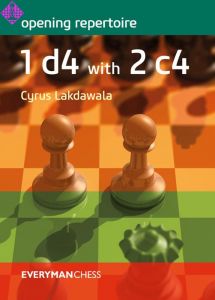 1 d4 with 2 c424,50 €
1 d4 with 2 c424,50 € -
 1. ...d6: Move by Move23,95 €
1. ...d6: Move by Move23,95 € -
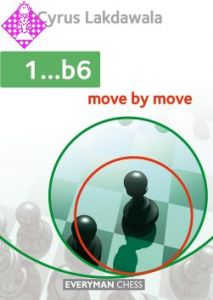 1. ...b6: Move by Move24,50 €
1. ...b6: Move by Move24,50 € -
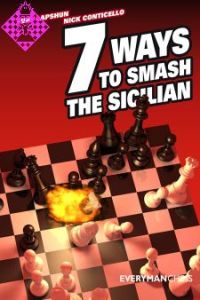 7 Ways to Smash the Sicilian18,50 €
7 Ways to Smash the Sicilian18,50 € -
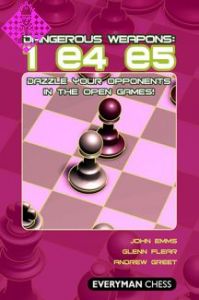 1. e4 e5 - Dangerous Weapons23,50 €
1. e4 e5 - Dangerous Weapons23,50 € - Mehr von Everyman

